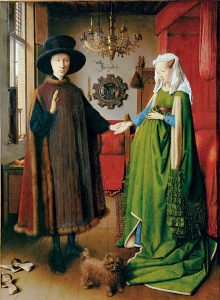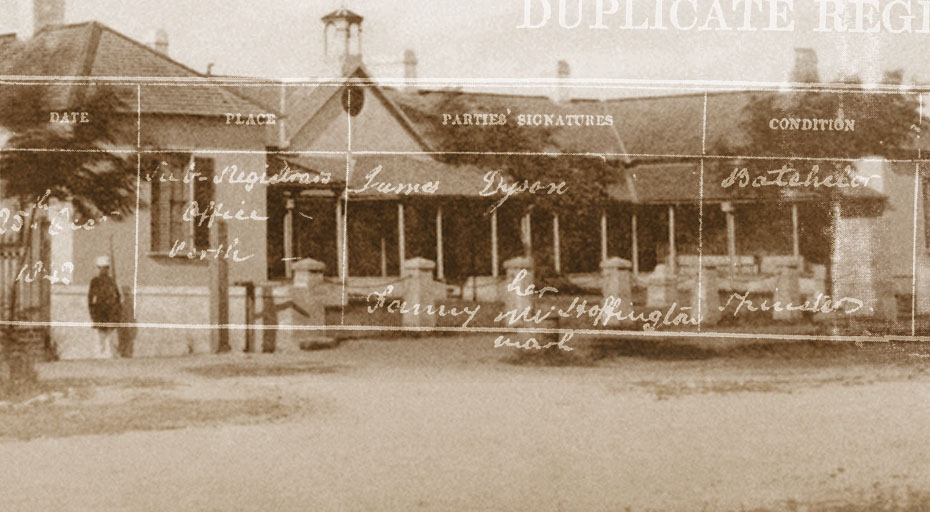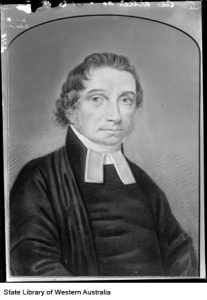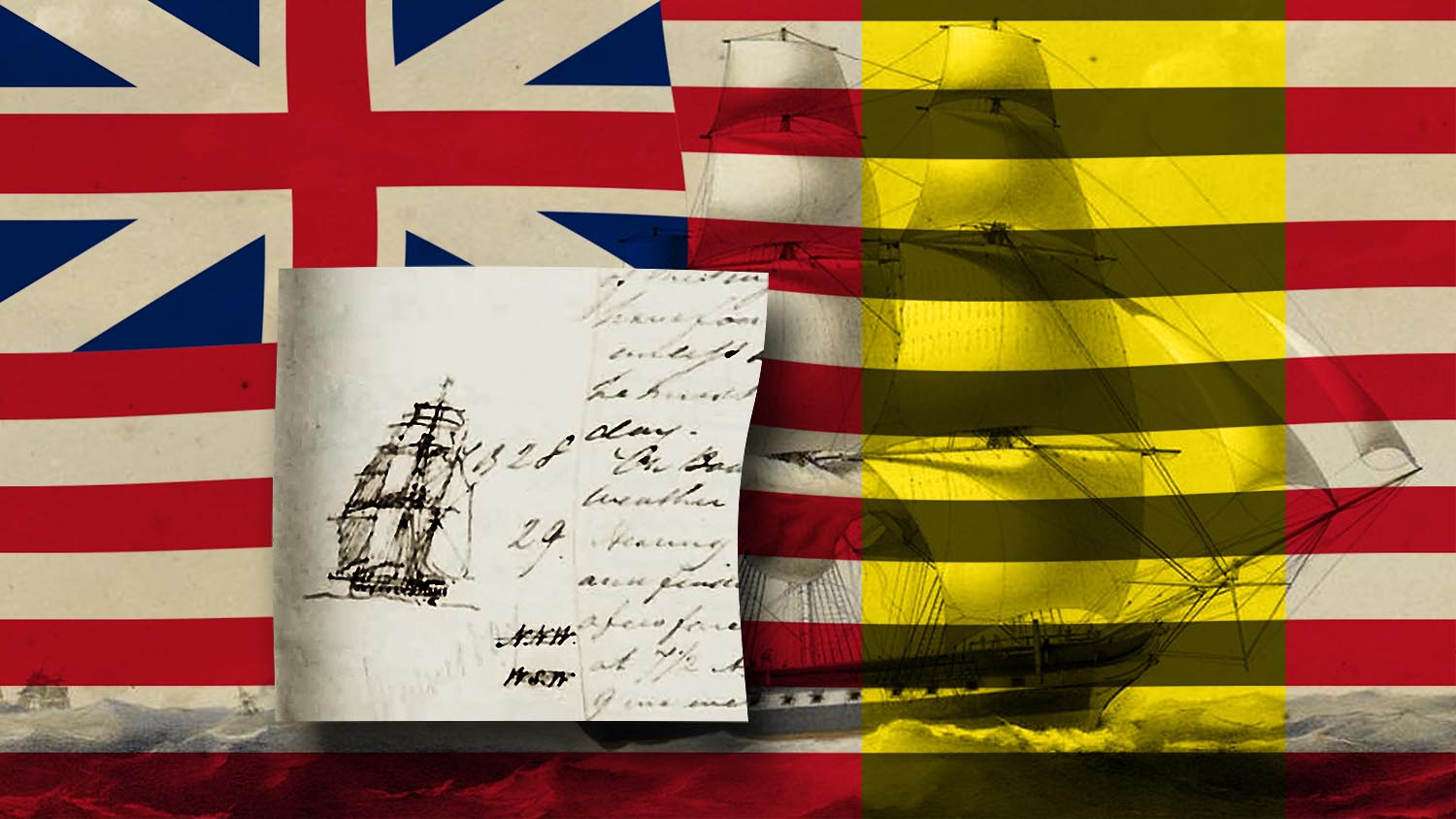Searching for James Dyson’s first wife and finding instead the Children’s Friend Society.
A little after a year since he arrived in the Swan River Colony, James Dyson, a labourer in the town of Perth, married for the first time that we know of. Civil registration of Births, Marriages and Deaths only begin in the Colony of Western Australia in 1841, so from this record—which is also the first tangible, formal document with James Dyson’s name on it in Western Australia—we know that the ceremony, witnessed by Stephen and Hannah Bridget Hyde (the couple’s neighbours in Perth for the next decade), took place on 25 October 1842.


Dyson was lying about his age—he was at least eight years older than the twenty-three years that was stated on that certificate. Of his bride, we are forced accept her age at the time of marriage (twenty-two) is nearly accurate for we have so little else to go on with. She signed with a mark (x) which strongly implies she was illiterate. Her name was written down for her as Fanny Hoffington. She gave birth to four children with Dyson before her own death. There is no official death certificate yet located, or any mention of the event in any of the local newspapers. Her marriage, the birth of her children and her place of burial represents the extent of the official knowledge we have about her, and even that is riddled with contradictions.
Her pre-marriage name is described differently on every single source record that mentions her:
Marriage: Fanny Hoffington
Birth of son George: Fanny Skeffington
Birth of son Joseph: Fanny Hoffingham
Birth of son William: Fanny Hovenden
Birth of daughter Hannah: Fanny unknown (If they couldn’t work out her maiden name when she was alive, what chance do the rest of us have?)

Her headstone in the old East Perth Cemetery gives her name as Frances, and confirms she was the wife of James Dyson, giving the date of her death. However this headstone was completed in 1901, a good half century after her demise.
The secondary source for Fanny Dyson’s existence comes from a transcription of a family bible made in the mid 1990’s. I have not seen the original and I don’t know where it is now located, or if it survives at all.
This transcription reads:
Married 1st: 10.9.1842 Frances Overton HOFFINGHAM
Died Perth, 12.5.1850, buried East Perth Cemetery.
It adds yet another possible family name to the mix. So where did this Frances/Fanny Overton Hoffingham/Hoffington/Skeffington/Hovenden aka unknown come from?
Having raised this question rhetorically, I still don’t have a satisfactory answer, but in researching the problem I came across a solution that could fit but is so outrageously improbable that it just couldn’t be true… One solid bit of written evidence… or a DNA test… could swiftly demolish this house of cards, but such is the hand I’ve been dealt. (If you think I am overcooking my metaphors, you haven’t sniffed nothing yet…)
There is no record of how Fanny (as I shall now call her—great-great-great-great grandmother being too much of a mouthful) arrived in the Swan River Colony. Records for servants, labourers, wives and children arriving were seldom made. If she had been a convict, there would have been some record. The ruling culture was unapologetically sexist, classist and would have felt no shame in any other *ist you would like to pin to them. Such was their overwhelming sense of superiority, any who did not measure up to their own self-image of importance, quite simply was not worth mentioning. Thus, arrival notices such as published in the Shipping news obscures the identities of an extensive swathe of population who may have been in the young colony. Steerage passengers on boats were not named.
This should not divert attention away from the fact that the population of the twelve-year old colony was still pathetic.
By 1841, the Colony’s pitiful non-aboriginal population of under four-thousand men women and children was not just stagnant, it was contracting. workers were in critically short supply. The first colonists had bought out a labour force that they bound to themselves by contract. While under contract, it was illegal for a servant to leave a master’s employ. But after a decade, these contracts had mostly expired (or were about to), and those workers were then free to either work for themselves, or get the hell out of colony as soon as they were able, away from bosses far too much in love with themselves. Young female domestic servants were in especially short supply. They had a tendency to swiftly and inconveniently give birth to children, or get married— often both (but not necessarily in that order.)
I suspected there had to be some scheme to at least attempt to replenish the work force and add to the stock of peons (much later on, convicts would be brought in, but not until 1850). If Frances was not an unrecorded child, or the domestic servant of some named immigrant, she might have arrived through some such scheme. Then I found the following article in a newspaper of the year 1837:—
The date was about right. Might Fanny have be one of these girls from the Orphan School?
I draw your attention to an inestimable book by Geoff Blackburn called The Children’s Friend Society: Juvenile Emigrants to Western Australia, South Africa and Canada 1834-1842.
From it, I learned about the Children’s Friend Society, the first in a long tradition of sending to Western Australia, child migrants as a virtual slave labour force (useful until they got too old or their indentures expired). As always, the road to hell was paved with good intentions. However, the seventy-three children who were dispatched to the Swan River Colony (only seventy-two actually arrived) had a much kinder time of it than their brethren sent to Canada or the colonies at South Africa. The great majority of those sent were boys, which makes it much easier to account for the female immigrants.
A Captain Edward Pelham Brenton founded the society in 1830, fired by the same evangelistic religious impulse of the era that motivated little Wilberforce to push through the laws in Britain abolishing slavery. Immigration was not part of the original plan: it was initially a scheme for training orphans for employment. Not just orphans, but all “the neglected and destitute children that infest the streets of the Metropolis” (p16)… but when jobs could not be found for their parents let alone their children, the Empire’s colonies beckoned.
By 1841, the society was defunct. Brenton was dead, metaphorically and literally from a broken heart. Allegations of mistreatment of young people sent, in particular, to the colony at Cape Town—sealed the scheme’s fate—the court of public opinion in Britain passed its judgement. But in Western Australia, perpetually out of synch with the spirit of the times, the society’s agent in the colony continued writing to request more fodder orphans be sent, even after the head office in London was closed. This hapless agent was the Colony’s colonial chaplain, John Burdett Wittenoom.
Wittenoom, who under no circumstances could ever be accused of being an evangelical, did have one redeeming characteristic in the exercise of his pastoral duties: He seemed to genuinely care for the welfare of the children that passed through his charge. The record shows that he followed their progress and checked up on them long after he had any official requirement to do so. His passion was children’s education (and perhaps music). He might have been the first to admit that he would have much rather have remained the master of a college back in London than take the job of token government religious leader in an obscure colony on the far side of the world. He would have had little enthusiasm for the religious drive of the disturbingly young wife of the Governor of that Colony, Ellen Stirling, but in the Children’s Friend Society they did share a common interest. She was acting matron for some of the Society’s charges on the ship that brought her and her husband back to Western Australia in 1834. Although, like her soon-to-be monarch, Victoria, she was barely older than the young women she had guardianship of.

The ‘orphans’ were supposed to be teenagers before they were dispatched to the colonies, and before that time, they needed to be housed and trained back in England. The young Princess Victoria was also a supporter of the society. In her honour, The Royal Victoria Asylum for Girls at Chiswick to the west of London was named. This was the Orphan School of that newspaper article.
It is a bizarre quirk of this culture how these girls were guarded; age or experience counted for nothing. Being, or having been married, was all. This is Jane Austen territory. That Lady Ellen Stirling was only twenty, and perpetually pregnant, somehow made her a suitable guardian for other younger women. While she did have her newly-knighted husband present on that voyage, (though you wonder how useful Sir James Stirling would have been in the situation) that was not the case for the matron sent out on the “Eleanor” to look out for those twelve girls in 1836. She was a young widow of thirty with four very young children of her own. They accompanied their mother to Western Australia, and they were likewise sponsored by the Society for their passage to the Colony. Wittenoom would also keep an eye out for their well being.
Now for the big reveal:— All the orphan girls are accounted for and none are named Fanny or Frances. Anticlimactic, yes? Their Matron, in short order, remarried to a man in the colony named Edwin Knott, and the former Mrs Sarah Massingham took his name. The youngest of her four children to the late John Massingham was born in 1833 and was only aged four in 1837. In 1842 she was nine, so even allowing for the greatest elasticity in birth-dates for both parties involved, she could not have been the wife of James Dyson even though she indeed was called Frances (or Fanny) Massingham. She married a young labourer called John Wansbrough out in the Beverly district in 1856 but died in childbirth later that same year.
Massingham — Hoffingham… We are talking illiteracy here, so it might have worked… and it still might! The eldest of Mrs Knott’s children was also a daughter. In 1842, Emma Massingham was aged about fourteen. Now Dyson was in actuality aged over thirty years, so, if these two did indeed hook-up (to use an anachronistic term), it is quite a repellent concept to my thinking and would have been pushing things even by the standards of those days. They would have had, although, as a rôle model, the by now former Governor of the Colony who was thirty when he married his wife of sixteen. Wittenoom would not have approved of the match, I am sure, so that could be why Emma might have assumed the name of her younger sister and the couple both lied about their age to the registrar. They were not married in any Church service Wittenoom presided over. Then the deed was done.
Not very convincing, is it?
This is all pure supposition of course, and a long bow is drawn to even more ludicrous levels of tension when you discover after the first Mrs Dyson’s reputed death in 1850, four months after the death of her last baby, leaving three young boys aged between six and two, Emma Massingham wedded a man named John Henry Gregory in 1851. The Gregorys had ten children over the course of a marriage that lasted sixty three years. They both died only a few months apart, the year the Great War began in 1914.
Of course, maybe Fanny Dyson never died, and she left her husband, as James Dyson’s next wife would leave her first husband*. Remember, we do not have her formal record of death even though she was allegedly interred in Perth’s only official burial ground and deaths were supposed to be recorded. How could James have ever been persuaded to go along with such an outrageous scheme? But Dyson had secrets, many secrets, including one big one he would not have wanted coming to light just as the first convict ships were arriving in Western Australia. There was leverage to be applied, possibly enough for him to have seen his young wife ‘dead’ as the only alternative to discovery.
This story is just that. It cannot be proven. Running a nose over the dead fish of feasibility reveals that this stinks. Yet so much in James Dyson’s history, especially when Mrs Richard Edwards, the former Miss Jane Devling and Dyson’s eventual second wife enters the narrative, is equally pungent, if not actively odourific. The difference is for the outrageous tale of Mrs Jane Dyson, we can prove that it is true.
Updates and future research directions.
Since this article was written, an even more far fetched theory concerning the identity of the first Mrs Dyson has been developed. Unlike this one, I believe it to be true!
- P.S. It turns out Fanny Dyson did leave her husband, but then she died.




